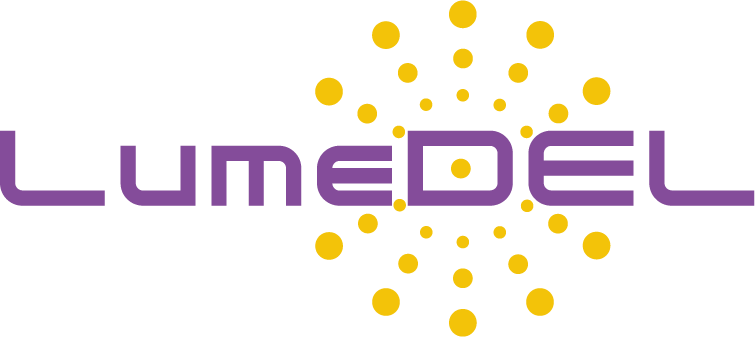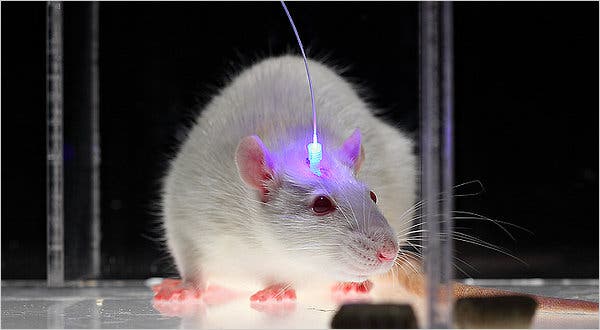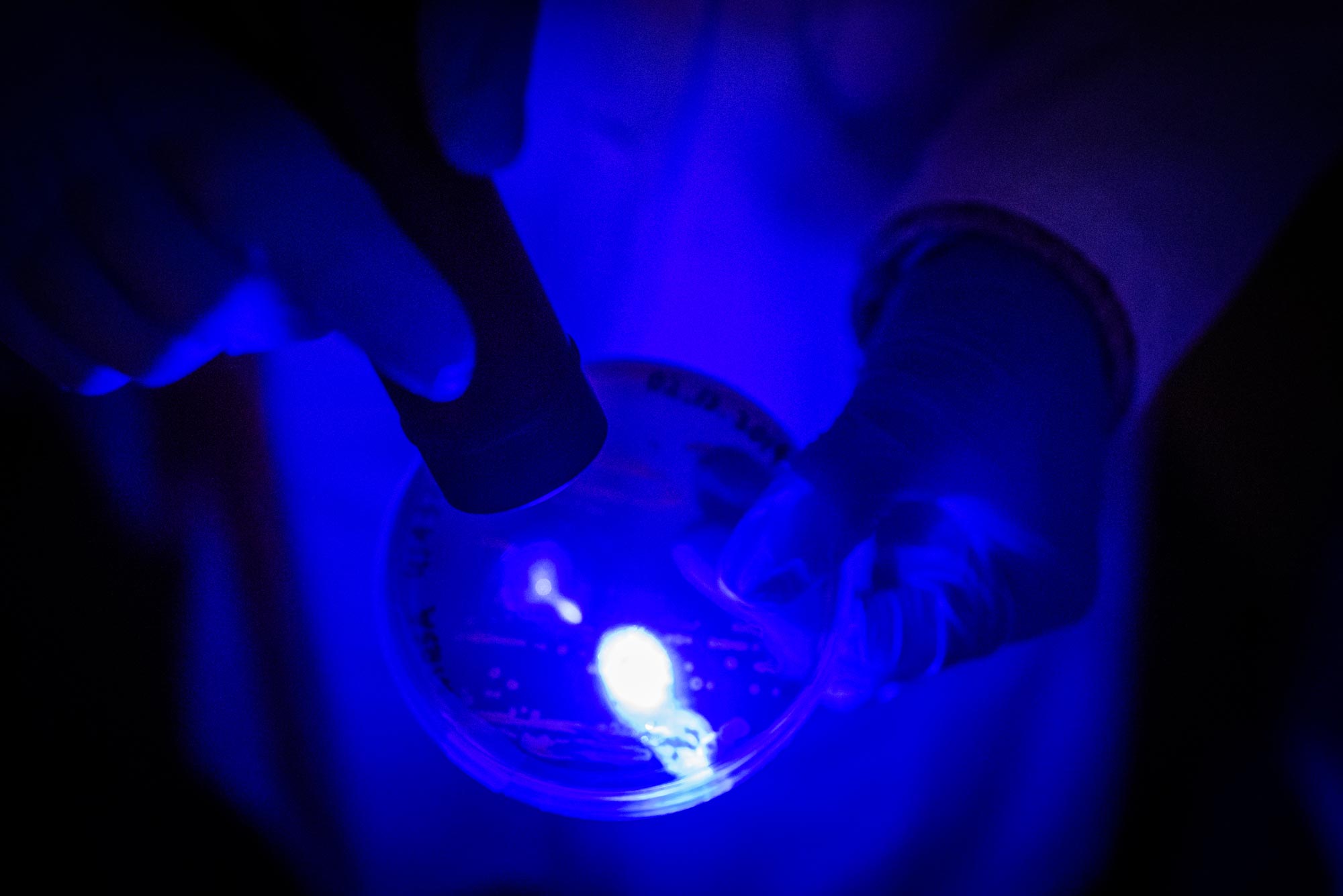
APPLICATIONS
LumeDEL’s NewDEL™ fiber-coupled LEDs target key photonics for life sciences, medical, scientific, and industrial applications that require stable illumination at specific wavelengths and/or radiant powers to achieve success.
Fiber-Coupled LED Applications
LEDs are fast becoming the go to light source for a variety of applications in life sciences, medical, industrial, and scientific applications. LEDs provide a number of advantages over lasers, including ease of use, lower cost, and more comprehensive spectral coverage. Compared to mercury-vapor and deuterium arc lamps, LEDs are more efficient and offer longer lifetimes and smaller footprints, as well as “instant-on” performance.
LumeDEL’s NewDEL™ fiber-coupled LEDs include 17 narrowband models operating from the UV to the near-IR spectral regions, as well as two white light LEDs and a continuum source. The models combine high performance with complete configurability, from pulse width to trigger levels to operating mode, so that users at any level can set up a light source ideally suited to their needs.
We engineered the NewDEL™ product groups to serve the researchers and innovators working in the following areas:
-
Spectroscopy
-
Optogenetics
-
Photodynamic Therapy (PDT)
-
Fluorescence-Guided Surgery
-
Fluorescent Excitation
-
UV-Based Chemical and Biological Analysis
-
Photocuring/Photopolymerization
-
Photobiomodulation
-
Ultraviolet Germicidal Irradiation (UVGI) Research
-
Photocatalysis Research
-
Antimicrobial Blue Light (aBL) therapy
Spectroscopy
Spectroscopy is a nondestructive optical technique for identifying and quantifying the various chemical components in a sample by matching the reflectance or transmittance spectra to established spectral signatures. The technology is in broad use, with applications across a range of market sectors, including industrial, life sciences, medical, and scientific.
NIR spectroscopy (NIRS) is used for quality control and nondestructive testing of raw materials and end products in industries such as food and beverage production, pharmaceutical manufacturing, and polymer synthesis. The technology supports rapid, nondestructive analysis for everything from acceptance testing to process control. Miniaturized NIRS units under development would enable consumers to monitor ingredients in their food, check food freshness at the supermarket, and verify medication quality.
Functional near-infrared spectroscopy (fNIRS) uses near-IR light (650–1000 nm) light to monitor tissue oxygenation non-invasively and continuously. The technology was originally developed to detect hemoglobin changes in the brain to assess oxygen saturation. Cranial bones block visible light, but near-IR light penetrates. Early studies focused on brain-function mapping but fNIRS now has applications in medical diagnostics and therapeutics. With the success of these initial efforts, researchers are using fNIRS to evaluate oxygenation of tissues elsewhere in the body.
In the semiconductor industry, spectral reflectometry (380 nm-1050 nm) is widely used for thin film metrology and for plasma etching endpoint control. The technique delivers quantitative results instantly and accurately. It is generally applied in mainstream fabrication settings.
Downtime in a semiconductor fab can cost $1 million or more per hour, making equipment reliability critical. Fiber-coupled LEDs offer lifetimes of up to 50,000 hours. By replacing mercury arc lamps with LED light sources, manufacturers can reduce unplanned downtime and maintain throughput.
The NewDEL™ Advantage for Spectroscopy:
- Two white light models available, as well as a continuum source
- Choice of operating modes – manual to completely programmable remote control
- Highly configurable, including pulsed or triggered operation
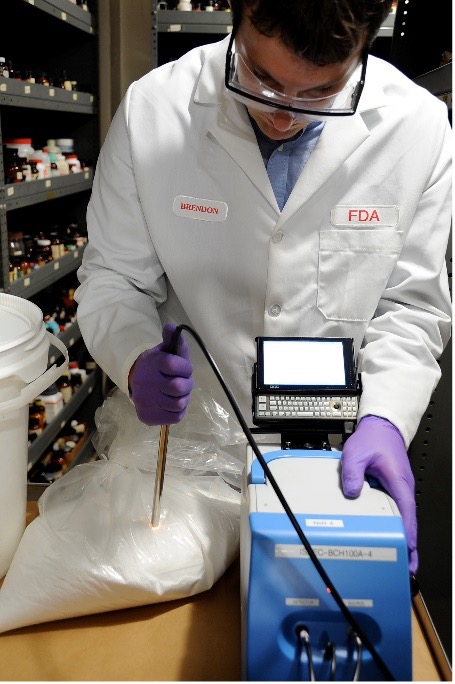
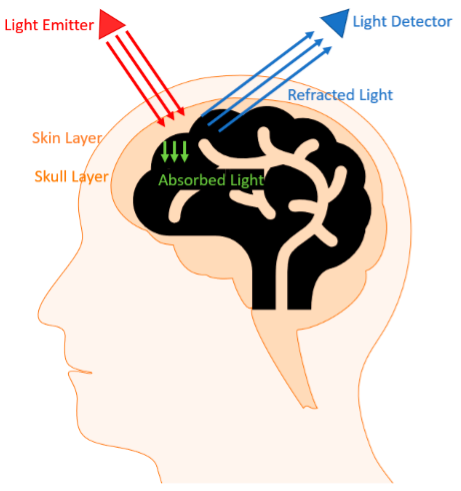
Optogenetics
Optogenetics involves using light to control cells and structures that have been genetically modified to incorporate photosensitive proteins. Neurons, cells, or even regions of cells can be activated simply by illuminating them with the proper wavelength. The technique has shown promise for a variety of applications ranging from mapping brain function to controlling stimulation and response. Recent clinical trials in optogenetics are studying its ability to relieve vision loss, deafness, pain, and other conditions. Since the introduction of the technology less than 20 years ago, many top medical journals have described it as a core technology for the future of humanity.
Fiber-coupled LEDs are excellent light sources for optogenetics. They make it possible to study the response of live and freely moving animals to photo stimulation by monochromatic light delivered by optical fiber through implantable cannula.
The NewDEL™ Advantage for Optogenetics:
- User configured triggers and pulse widths to customize operations for the application
- 7 narrowband models, from the deep blue to the red spectral regions for common opsins
Photodynamic Therapy (PDT)
In PDT, light activates a drug that preferentially concentrates in tumor tissue, triggering a photochemical reaction that kills the cancer cells. The drugs are either delivered by infusion or applied topically. Because the process needs to occur in the presence of oxygen, initial investigations focused on skin cancers. Endoscopy and fiber-coupled light sources have enabled the technique to be applied to tumors of the throat, esophagus, airways, lungs, and even internal tissues.
The output characteristics of the light source are critical to success. Each PDT drug has a specific activation waveband. Because the penetration depth of light in tissue goes as a function of wavelength, the excitation wavelength also can be selected to target different layers – blue light for surface lesions and red/NIR light for subsurface growths. Destroying tumor cells while leaving healthy tissue undamaged is a balancing act that requires variable radiant power, so sources must have well behaved dimming characteristics.
The NewDEL™ Advantage for PDT:
- Broad choice of narrowband sources
- Pulse-width-modulated (PWM) dimming for full control over radiant power without wavelength drift

Fluorescence Guided Surgery
The full removal of malignant cells during cancer surgery dramatically improves patient survival rates but distinguishing cancerous cells from healthy tissue can be extremely challenging. Fluorescence-guided surgery (FGS) gives surgeons a powerful tool for clearly visualizing the margins of a tumor to maximize removal of residual cancer cells. In FGS, specially designed fluorophores preferentially accumulate in tumors. When excited with the appropriate wavelength of light, these materials fluoresce, displaying tumors and other structures in real time with contrasting pseudo-colors. This supports more complete tumor resection and better patient outcomes.
Most FGS fluorophores are excited by monochromatic light in the 650-810 nm spectral range. Those that fluoresce with NIR illumination are particularly effective because the greater penetration depth can reveal subsurface growths. In addition, a few clinically approved dyes are excited by violet (405 nm) and cyan (490 nm) output. Because of the limited penetration depth of short-wavelength light, these materials are typically applied to surface lesions.
Traditionally, fluorescence imaging systems have incorporated lasers, which can be expensive, complex, and often temperamental. The benefits of fiber-coupled LEDs for this application start with robustness – when lives are at stake, systems cannot fail. LEDs are rugged enough to survive the shock and vibration of being moved in the hospital environment. Fiber-coupled LEDs combine high radiant powers, narrowband output, and low cost in a compact form factor. The latter characteristic is particularly important for systems used around the operating table, where space is always at a premium. Their long lifetimes also make them appeal to cost-conscious healthcare organizations.
The NewDEL™ Advantage for FGS:
- Maximum output powers for various diameter fibers
- Fully configurable pulse widths
- Pulse-width-modulated (PWM) dimming for full control over radiant power without wavelength drift
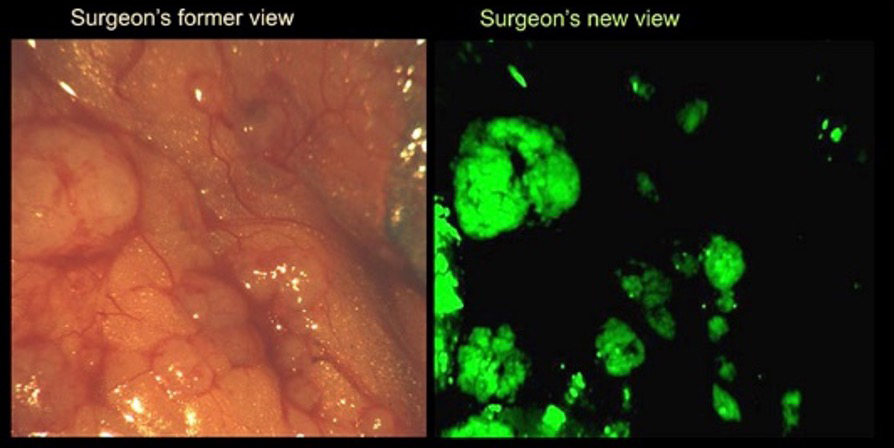
Fluorescent Excitation
Fluorescence occurs when light excites a photoactive material. Typically, the material absorbs a higher energy (shorter wavelength) photon and emits a lower energy (longer wavelength) photon. Emission occurs spontaneously, producing incoherent output.
Fluorescence is used in the life sciences to nondestructively track or analyze biological molecules by stimulating fluorescent materials with specific colors of light. Some proteins or small molecules in cells are naturally fluorescent. Alternatively, molecules can be “labeled” with an extrinsic fluorophore, a fluorescent dye.
There are two common applications for fluorescence excitation and life sciences:
Fluorescence microscopy has become an essential tool in cell biology and medical diagnostics. In immunofluorescence, for example, antibodies that bind to certain types of cells, structures, or proteins are tagged with fluorophores. When a is sample is exposed to the antibodies, then illuminated by the appropriate wavelength of light, any labeled cells or materials fluoresce, producing a high-resolution image. Researchers apply the technique to visualize the dynamics of tissue, cells, individual organelles, and macromolecular assemblies inside the cell. Healthcare professionals use images to detect cells or proteins characteristic of certain pathogens or certain autoimmune diseases.
Fluorescence imaging is a non-invasive technique that applies fluorescence to help visualize biological processes taking place in living organisms. Fluorescence imaging techniques include real-time polymerase chain reaction (PCR) and western blot imaging. Real-time PCR uses fluorescent dyes to detect nucleic acids for diagnostic purposes. One significant application is clinical detection of viruses, cancers, and genetic abnormalities in humans. Western blotting makes it possible to identify specific protein molecules in a mixture of proteins. It provides information about the presence, size, and even relative concentration of a protein.
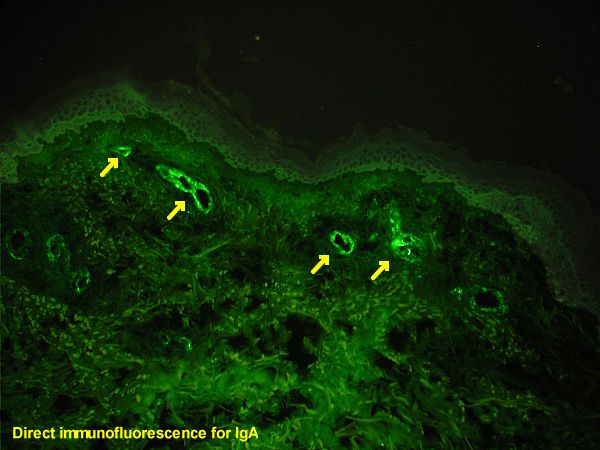
Fiber-coupled LEDs provide good substitutes for mercury-vapor arc lamps, which are beginning to be phased out for environmental reasons. Fiber-coupled LEDs can generate high radiant power that can be controllably dimmed to maximize signal while preventing sample damage. Mercury-vapor lamps are typically modulated by external choppers, which add size, complexity, and points of failure. Fiber-coupled LEDs are electronically modulated, allowing them to achieve higher frequencies while eliminating the drawbacks of choppers. The small form factors of LED light sources work well for homegrown or OEM tabletop analyzers, where footprint is a concern. Finally, long lifetime reduces cost of operations, in terms of downtime, replacement bulbs, and maintenance.
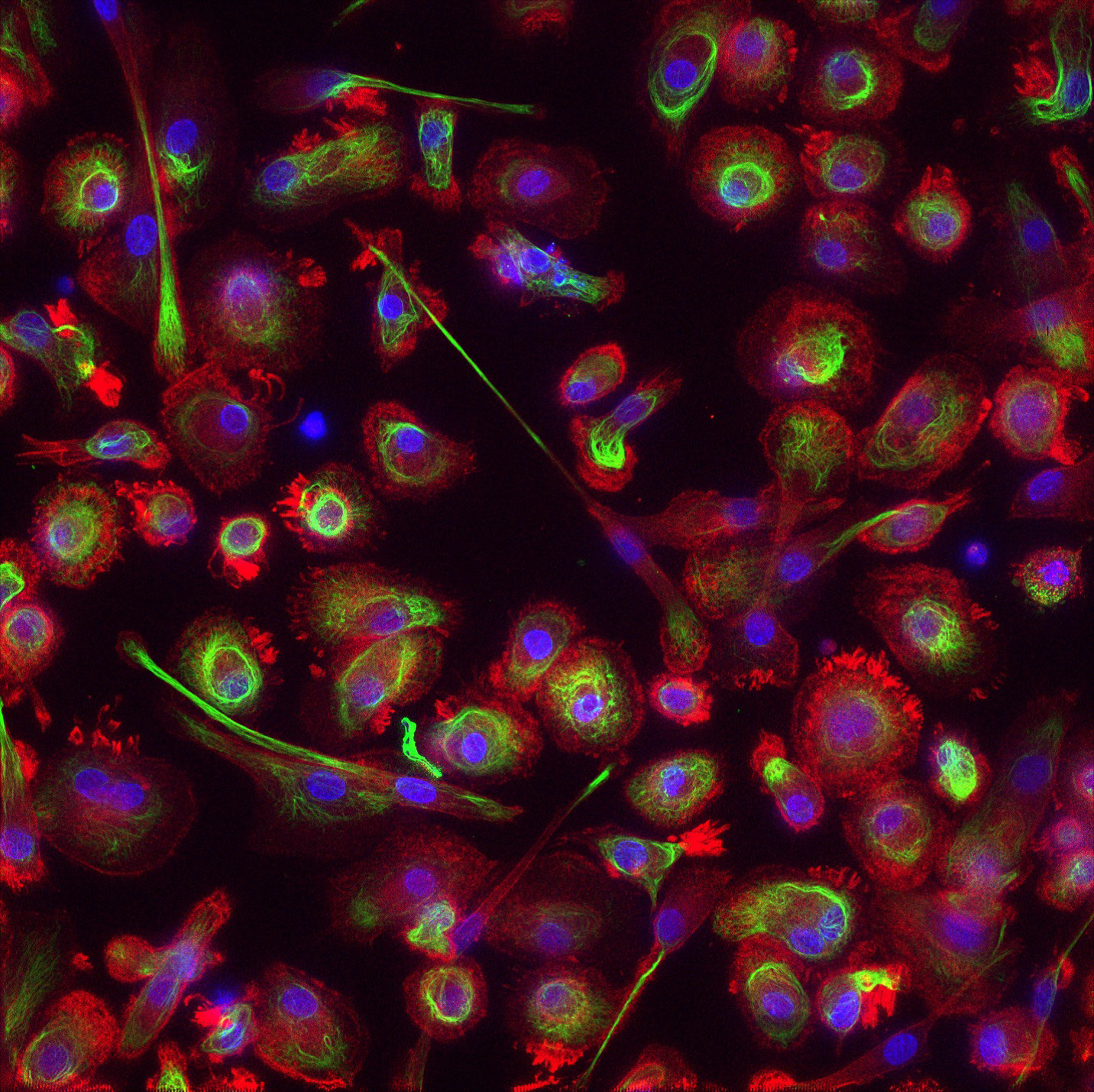
The NewDEL™ Advantage for Fluorescence Excitation:
- 17 narrowband models
- High radiant power to support widefield imaging
UV-Based Chemical and Biological Analysis
UV-C LEDs are transforming chemical and biological analysis systems, replacing deuterium lamps in applications like high-performance liquid chromatography (HPLC) and UV fluorometry. In HPLC, the instrument pumps an unknown compound suspended in solvent through a column filled with a separating medium. As a result, different constituents transit the column at different rates. As they exit in sequence, they undergo detection and analysis.
For years, deuterium lamps have been the most common source for HPLC. They produce stable output, but over a relatively wide spectral band that requires bandpass filters or diffraction gratings for wavelength selection. Because they are discharge sources, they require a warm-up period before operation. In contrast, UV-C LEDs are instant on, with high efficiencies, good spectral stability, and small footprints. Also, they can produce narrowband output, eliminating the need for filters or diffraction gratings.
UV Fluorometry uses optical techniques to analyze the fluorescence signal given off by a sample. Applications include bioassays and water testing. Toxins like oil and other hydrocarbons, as well as certain pathogens, have UV fluorescence signatures that make UV fluorometry an ideal technology for in-line water quality monitoring.
Here, too, deuterium lamps are being displaced by fiber-coupled UV-A LEDs, which operate at 365 nm. The small footprint, ease of use, and robustness make them practical alternatives for industrial monitors and bench-top lab instrumentation. High radiant output can support trace detection at levels of parts per billion.
The NewDEL™ Advantage for UV Based Chemical and Biological Analysis:
- Models at key UV-C and UV-A wavelengths
- High radiant power for trace detection
- No warmup time – instant on
- Narrowband emission
Photocuring & Photopolymerization
Photopolymers, or light-activated resins, are materials that change properties when exposed to light. Illumination, typically at ultraviolet or visible (blue) wavelengths, triggers polymer cross-linking, converting liquids or gels into solids. Photopolymerization chemistry has a wide variety of commercial applications, including printing, coatings, adhesives, sealants, printed circuit boards, and lithography. More recently, UV LED technology has been making headlines in 3D printing.
Spot curing with fiber-coupled LEDs is used for research, for 3D printing of very fine features, or detail work like medical device assembly. Fiber-coupled LEDs provide significant advantages over arc lamps in spot-curing applications. LEDs result in cooler substrate temperatures, making them ideal for curing thermally sensitive materials. LED-curing systems offer energy efficiency from their instant-on properties with no warmup required. LEDs also offer lower cost of ownership due to long lifetimes.
The NewDEL™ Advantage for Photocuring/Photopolymerization:
- High radiant power and stable spectral output for reliable results
- A range of wavelengths to cure different materials
- 280-nm model for preventing oxygen inhibition
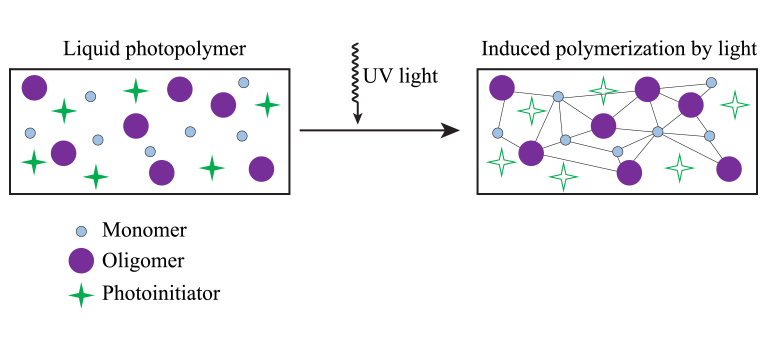
By Юкатан – Own work, CC BY-SA 4.0,
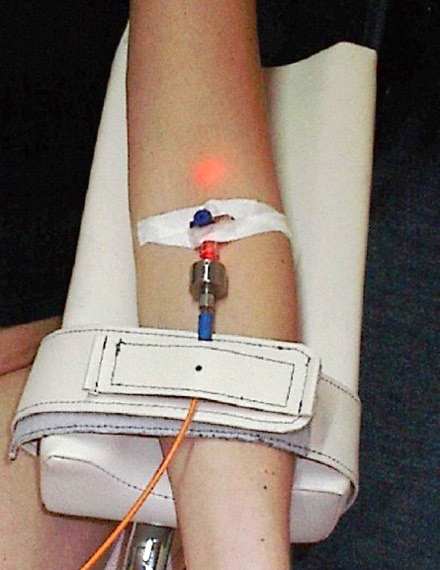
Photobiomodulation
Red and near-IR light (600-1000 nm) are being explored for their potential to address a variety of medical conditions by altering function at a cellular level. Known as photobiomodulation, the technique is under investigation for wound treatment, tissue repair, pain management, treatment of traumatic brain injury, and more. Although some results are promising, possible mechanisms are still subject to debate and the majority of studies focus on animal models or in vitro samples.
Intravenous blood irradiation is another low-level light treatment modality. It has a long history of use on multiple conditions.
Much more research and rigorous clinical trials need to be conducted to establish a solid scientific foundation – and that is where fiber-coupled LEDs come into play.
Early work used laser light sources, but the power levels have the potential to cause tissue damage. The focus has shifted to LEDs. Red and near-IR fiber-coupled LEDs provide highly configurable narrowband output can equip investigators to conduct well-controlled studies to determine which parameters will provide repeatable results.
The NewDEL™ Advantage for Photobiomodulation:
- High radiant power and pulsed modes of operation
- Easy control of parameters like pulse width
Ultraviolet Germicidal Irradiation (UVGI) Research
UV-C germicidal irradiation is an established technology for disinfection of air, surfaces, and water. UV-C light has germicidal properties. It damages DNA, impairing the ability of pathogens to multiply.
Traditionally, UV-C sources have used mercury-vapor lamps. Mercury vapor lamps are large, broadband, and generate omnidirectional output, much of which is thrown away. In contrast, UV-C LEDs (275-280 nm) are highly directional, as well as energy efficient, compact, and lower in cost to operate. They’re also eco-friendly, eliminating concerns about mercury disposal. As a result, UV-C LEDs are capturing increasing market share, particularly in the area of point-of-use water purification.
Fiber-coupled UV-C LEDs provide useful sources to researchers and innovators developing new techniques and solutions in this critical area.
The NewDEL™ Advantage for Ultraviolet Germicidal Irradiation (UVGI):
- High radiant power and pulsed modes of operation
- Stable spectral output for reliable results
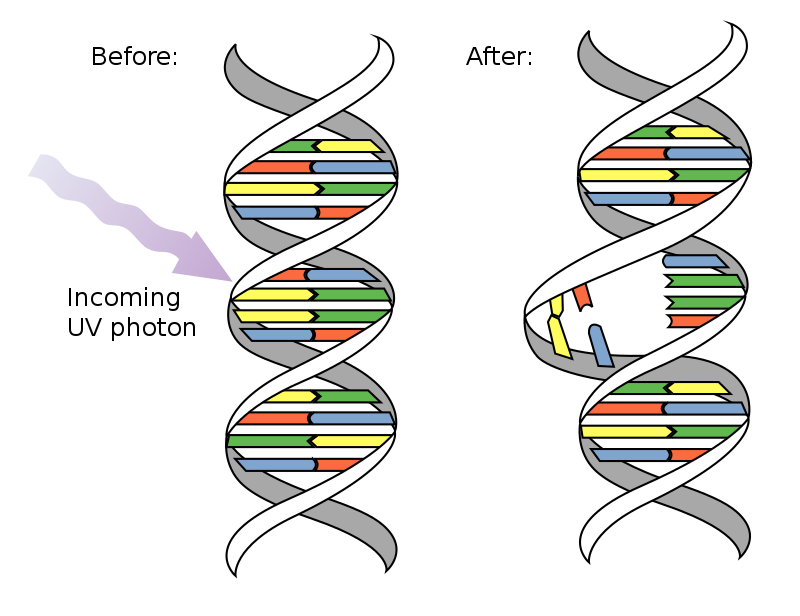
Photocatalysis Research
A photocatalyst is a photoactive material that facilitates a chemical reaction by contributing energy harvested from incident light. Illumination at the proper wavelength puts the photocatalyst into an excited state. It transfers that energy to the precursor elements and molecules so that the reaction occurs faster, or at a lower temperature or pressure. At this point, the photocatalyst relaxes back to steady state, ready for the next cycle.
Photocatalysis has a number of important industrial, life sciences, and scientific applications:
-
Water splitting, a nonpolluting method to produce clean hydrogen for use in hydrogen fuel cells
-
Antibacterial and antiviral fields for air, surface, and water disinfection
-
Cancer treatment, particularly with nano photocatalysts and photo-redox catalysis used to combat hypoxic tumors
-
Synthesis of complex and often highly functionalized molecules for development of new pharmaceuticals and agrochemicals
-
Support of “circular chemistry” in pursuit of a “circular economy” in which there is zero waste
Fiber-coupled LEDs provide ideal light sources for the research and product development environment. They’re compact, efficient, and provide narrowband spectral coverage ranging from the UV-A spectral region throughout visible wavelengths (365-600 nm).
The NewDEL™ Advantage for Photocatalysis Research:
- Programmable and highly configurable for a system that can support a variety of experiments
- High radiant power
- Stable spectral output for repeatable results
Antimicrobial blue light (aBL) therapy
With the rise of antibiotic resistance around the globe, the healthcare community needs new ways to treat persistent infections. Blue light (400-470 nm) irradiation has demonstrated immense promise as an alternative approach for cases where drug-based treatment options have run out. Compared to UVGI, aBL has a lower germicidal efficiency, but it can be used at levels that are lethal to microorganisms without affecting exposed mammalian cells. Treating microbial infections with aBL imposes few or no side effects on humans or animals. Studies have shown aBL can be effective against bacteria, fungi, viruses, and parasites.
Research is underway around the globe to quantify doses and wavelengths for optimal results. Some studies have indicated that the effectiveness depends on the strain of bacteria involved but aBL still represents an important new weapon for the treatment of humans and animals, alike.
The NewDEL™ Advantage for aBL:
- High radiant power
- Pulse-width modulated (PWM) dimming for tight control of radiant power with stable output wavelength
